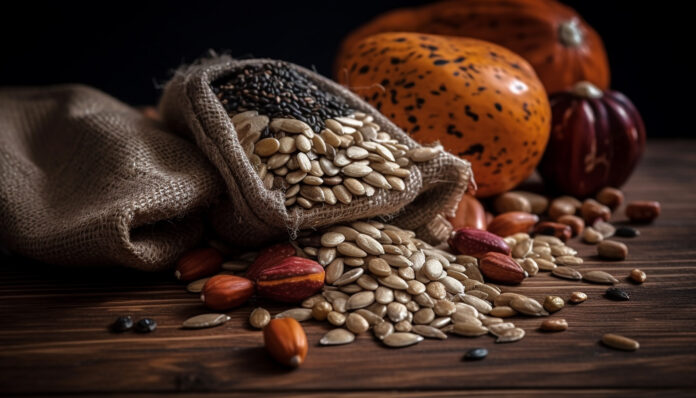Foenegriek, a member of the Fabaceae family, is recognised chiefly for its minute, golden-brown seeds that are both nutritionally and therapeutically potent. Valued for millennia, the seeds serve simultaneously as a spice and as an agent of healing, and their contemporary prominence in nutritional and medicinal arenas attests to their enduring relevance.
The Chronology of Foenegriek’s Adoption
The chronology of foenegriek’s dissemination is both extensive and well-documented. Archaeological evidence attests that the Egyptians incorporated the seeds in pharmacopoeias, in funerary rites, and even within the composite resins of mummification. In classical Greco-Roman society, the grains were consumed for their flavour and prescribed for an array of ailments. Ayurvedic and traditional Chinese medical texts, meanwhile, uniformly ascribed them digestogenic and adaptogenic virtues, perceiving the seeds as a tonic for both immediate and enduring health. The plant eventually expanded its range through trade and colonisation, and it is presently prominent in the Indian subcontinent, the Mediterranean basin, the Middle East, and select regions of Southern Europe.
Nutritional Profile of Foenegriek Seeds
The extraordinary nutritional density of the seeds substantiates their historical renown. A modest serving delivers a synergistic array of macronutrients—proteins, dietary fibre, and lipids—alongside potent micronutritional constituents, including vitamins A, B, and K, as well as an array of essential minerals. The presence of bioactive compounds such as saponins, flavonoids, and alkaloids further contributes to the seeds’ profile, suggesting multiple mechanisms by which they may support physiological homeostasis and overall health.
Foenegriek seeds deliver a concentrated source of protein that underpins muscle growth and cell repair. They also contribute both soluble and insoluble dietary fiber, which promotes smooth intestinal function and microbiome health. The seeds are rich in minerals, including iron, magnesium, manganese, and potassium, and they supply vitamins A, C, and a range of B-complex vitamins that together bolster their nutritional importance.
Alongside these nutrients, foenegriek seeds are endowed with bioactive molecules such as flavonoids, saponins, and alkaloids that impart them with noteworthy antioxidant and anti-inflammatory effects.
Long-Standing Uses in Traditional Medicine
Ayurvedic and Traditional Chinese Medical systems have applied foenegriek seeds for many centuries. Ayurvedic texts describe their ability to harmonize digestive processes, promote milk production in nursing women, and restore overall strength. Practitioners of Chinese medicine employed the seeds to support the kidneys, combat debility, and alleviate cough.
These practices extended to Middle Eastern and Mediterranean societies, where foenegriek was infused in herbal infusions or added to revitalizing tonics. Such a sustained and widespread usage across diverse cultures attests to the plant’s enduring reputation and perceived efficacy in promoting health.
Recent scientific investigations into foenegriek seeds have substantiated numerous anecdotal claims regarding their efficacy. Evidence indicates that these seeds may assist in glycemic control, thereby offering a supportive measure for individuals with diabetes. Their soluble fiber content appears to attenuate carbohydrate absorption, thereby mitigating postprandial hyperglycemia.
Additional studies have identified a cholesterol-lowering effect linked to the seed’s bioactive constituents. These components are believed to diminish low-density lipoprotein (LDL) cholesterol and to enhance vascular perfusion. Furthermore, the antioxidant profiles of foenegriek seeds are credited with reducing systemic inflammation and protecting cellular structures from oxidative damage, processes that contribute to senescence and pathogenesis.
Foenegriek and Gastrointestinal Well-Being
The capacity of foenegriek to promote gastrointestinal wellness is well documented. The seeds’ fiber content contributes to fecal bulk, facilitating regular bowel movements and mitigating the incidence of constipation. They are also regarded as a mild carminative, alleviating symptoms of dyspepsia, pyrosis, and gastroesophageal reflux when administered at appropriate dosages.
Traditionally, cultures have soaked the seeds in water overnight to prepare a demulcent mixture. The resultant mucilage creates a soothing barrier along the gastrointestinal mucosa, offering relief from irritative symptoms without disrupting the normal gut microbiome.
Foenegriek and Women’s Health
Foenegriek (Trigonella foenum-graecum) has historically occupied a central place in the promotion of women’s health. The seeds, prized since antiquity, are renowned for their ability to function as a natural galactagogue, thereby facilitating the secretion of breast milk in nursing mothers. Contemporary phytochemical analyses indicate that specific steroidal saponins within the seeds may enhance the systemic levels of prolactin, the principal hormone dictating milk production.
In addition to their galactagogue properties, foenegriek seeds and extracts are thought to exert stabilizing effects on the hypothalamic-pituitary-ovarian axis. By modulating estrogen and progesterone levels, foenegriek has been reported to diminish dysmenorrhea and to alleviate vasomotor symptoms in menopausal women. These empirical foundations are underpinned by centuries of empirical observation, rendering foenegriek a mainstay in feminine botanical health formulations.
Culinary Applications of Foenegriek
Beyond its therapeutic value, foenegriek occupies a prominent place on the spice cart. Roasting the seeds mellows their natural bitterness and imbues a toasty, nutty note that complements lentils, brassicas, and marinades. The seeds are a constituent of numerous spice blends, including the ubiquitous curry powders of South Asia as well as the baharat blends of the Arabian Peninsula and the ras el hanout mixtures of North Africa.
The young leaves, known as methi, are cultivated as a potherb and are folded into curries, stuffed flatbreads, and stir-fries. Their subtler, grassy flavour interacts well with dairy and tomato, illustrating the herb’s adaptability to both sweet and savoury preparations.
How to Use Foenegriek Safely
Despite its virtues, caution is warranted in the dosing of foenegriek. Routine culinary quantities pose no risk, but therapeutic regimens exceeding 5 grams per day may provoke gastrointestinal irritability, manifesting as flatulence, bloating, or diarrhea. Furthermore, the seeds are rich in saponins, which, in excess, may alter the odour of perspiration and urine. Individuals with hormone-sensitive conditions or on anticoagulants should consult a healthcare professional prior to extended use.
When employed as a food or dietary supplement, foenegriek is typically regarded as safe, but pregnant individuals should seek guidance from a qualified healthcare provider prior to the use of concentrated preparations, as these may potentially modulate uterine contractions.
Administrations commonly adopted include the following practices:
Steeping soaked seeds to prepare a herbal infusion.
Incorporating ground seeds into smoothies, batters, or baked products.
Using whole seeds in savoury curries, broths, and mixed spice pastes.
Cultivating seeds to produce fresh sprouts that enliven salads.
Observed Uptake of Foenegriek
Contemporary interest in foenegriek has gained momentum, paralleling the increasing global emphasis on herbal-centric health paradigms. Users are returning to foenegriek not only in accordance with its long-standing culinary heritage but also in response to corroborative experimental findings regarding its physiological actions. Commercial suppliers, responding to demand, now furnish capsules and powdered extracts, thereby facilitating its incorporation into everyday routines.
Its coexisting stature as a culinary ingredient and a therapeutic supplement enables foenegriek to endure across varied sociocultural settings and successive generations.
Concluding Appraisal of Foenegriek
In conclusion, foenegriek embodies more than a mere seasoning. This leguminous seed, rich in micronutrients, has a documented legacy in therapeutic, dietary, and gastronomic applications. Its contributions to glycaemic homeostasis, digestive health, cardiovascular function, and women-specific health issues underscore its multifaceted utility.
Contemporary scholarship persistently elucidates the physiological underpinnings of age-old customs, affirming that fenugreek occupies dual roles as a culinary delight and a medicinal agent of considerable merit. Its integration into everyday fare or health regimens allows practitioners to reap a diverse array of salutary effects, thereby sustaining a living testament to a heritage of several millennia.

